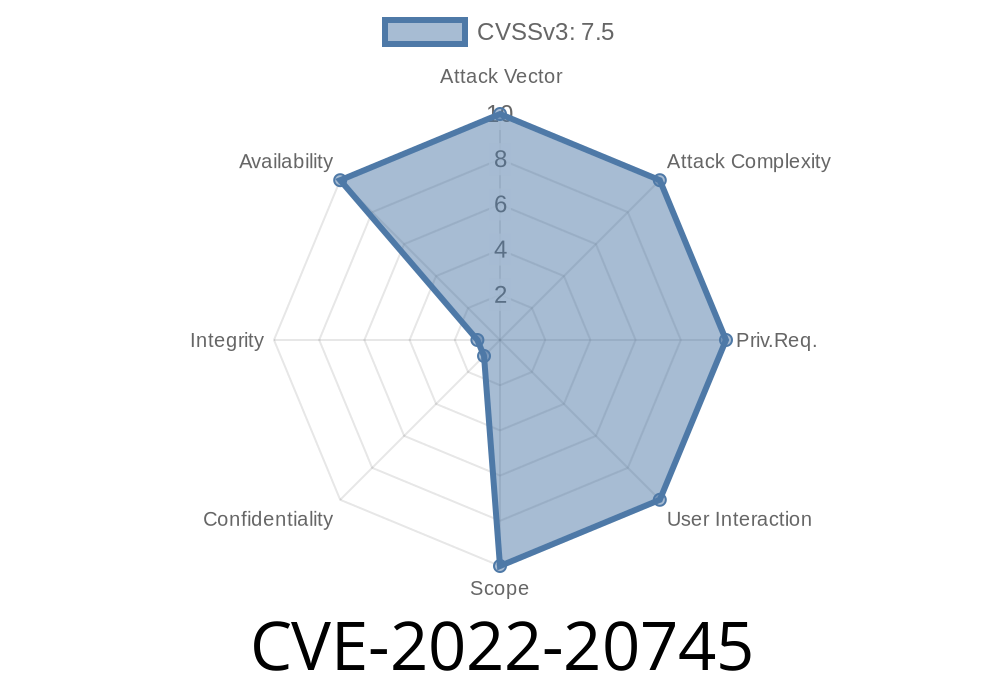Researchers have recently discovered a new vulnerability, dubbed as CVE-2022-20745, which impacts remote access VPN features of Cisco Adaptive Security Appliance (ASA) Software and Cisco Firepower Threat Defense (FTD) Software. This critical flaw allows an unauthenticated, remote attacker to cause a denial of service (DoS) condition by exploiting the web services interface of the affected systems.
Exploit Details
The vulnerability is present due to improper input validation when parsing HTTPS requests. To exploit this weakness, an attacker simply needs to send a crafted HTTPS request to a vulnerable device. A successful exploit enables the attacker to force the affected device to reload, resulting in a DoS condition. This disrupts the normal operations and services provided by the system.
Here is a code snippet of how a malicious HTTPS request could potentially be crafted
import requests
url = "https://<target_ip>/+CSCOE+/path/to/feature";
headers = {
"User-Agent": "Mozilla/5.",
"Accept": "text/html,application/xhtml+xml,application/xml;q=.9,*/*;q=.8",
"Accept-Language": "en-US,en;q=.5",
"Accept-Encoding": "gzip, deflate",
"Connection": "close",
}
payload = "Some Malicious Payload"
response = requests.post(url, headers=headers, data=payload)
Mitigations and Patches
Cisco has already released a patch to address this vulnerability. Users are highly advised to apply the patch immediately and ensure that their systems are updated. More information about the patch, relevant workarounds, and detailed instructions can be found in the Cisco Security Advisory [1].
It is also good practice to restrict access to the affected systems to trusted hosts and networks to minimize the risk of a successful exploit. Implementing proper access controls and firewalls can further help in protecting your infrastructure.
For more details about this vulnerability, you can refer to the following resources
1. Cisco Security Advisory: Cisco Adaptive Security Appliance Software and Cisco Firepower Threat Defense Software Web Services Interface Denial of Service Vulnerability
2. Common Vulnerabilities and Exposures (CVE): CVE-2022-20745
Conclusion
Organizations using Cisco ASA and FTD Software should treat this vulnerability with the utmost urgency. It is necessary to apply the provided patches and follow the mitigation steps to protect your systems from potential attacks targeting this flaw. Establishing proper security measures will not only safeguard your infrastructure but also minimize any disruption to your operations caused by a successful exploit.
Timeline
Published on: 05/03/2022 04:15:00 UTC
Last modified on: 05/13/2022 01:55:00 UTC
